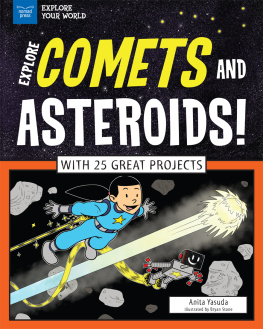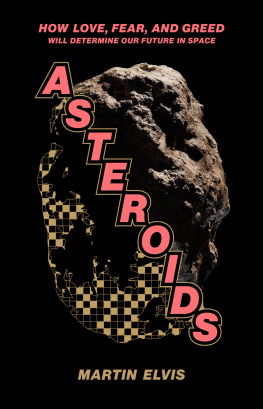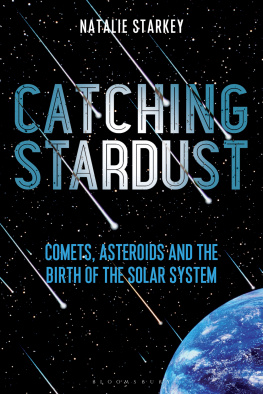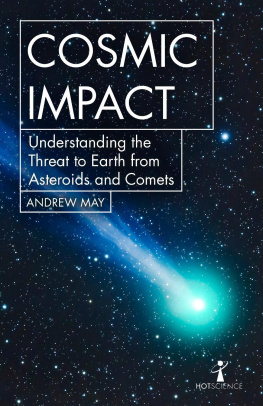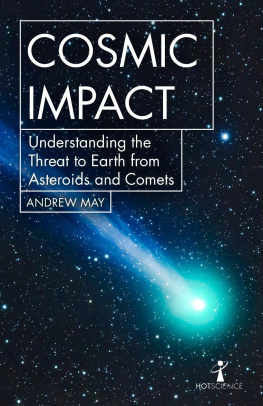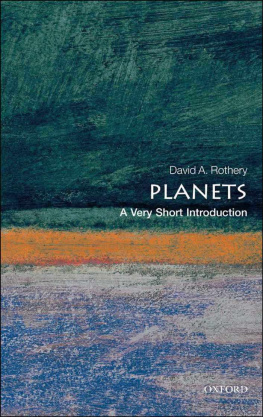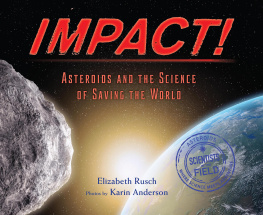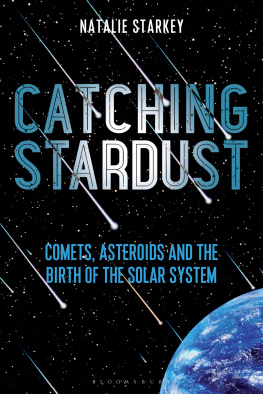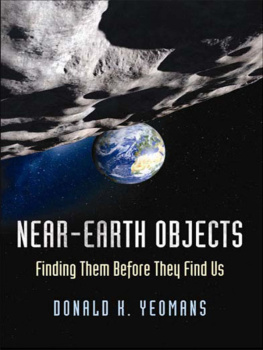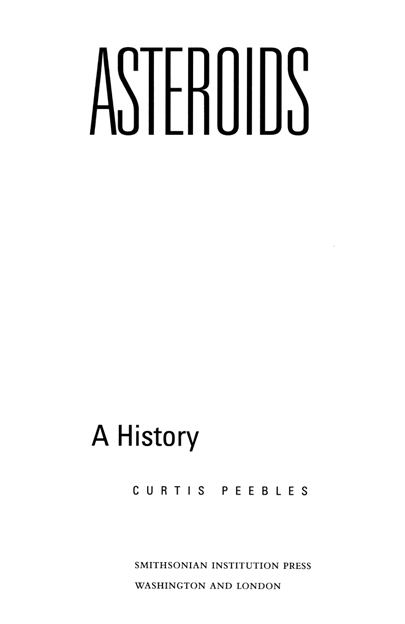2000 Smithsonian Institution
All rights reserved
Library of Congress Cataloging-in-Publication Data
Peebles, Curtis.
Asteroids : a history / Curtis Peebles
p. cm.
Includes bibliographical references and index.
ISBN 1-56098-389-2 (alk. paper)
1. Asteroids. I. Title.
QB651.P44 2000
523.44dc21
00-020733
British library cataloguing-in-publication data available
For permission to reproduce any of the illustrations, please correspond directly with the owners as stated in the captions. Smithsonian Institution Press does not retain reproduction rights for illustrations individually or maintain a file of addresses for photo sources.
A full subject index is included in the print edition.
ISBN: 978-1-560989-82-0 (paperback)
ISBN: 978-1-944466-04-6 (ebook)
v3.1
CONTENTS
ACKNOWLEDGMENTS
First and foremost, my thanks go to three pioneers of astronomyEugene M. Shoemaker, Carolyn Shoemaker, and David H. Levyfor taking the time to talk with me. The enthusiasm they felt for astronomy and the joy they took in their work was clearly evident. This made Eugene Shoemakers death in an accident all the more tragic. I also wish to thank Brian G. Marsden, of the Minor Planet Center, and Jennifer Palm, Postmaster of Palomar Mountain. Thanks also go to Lee Saegesser and the NASA History Office for providing copies of their asteroid files. Most of the sources used in this book would not have been available to me except for their efforts. Thanks also to the Palomar Mountain Lodge.
Insights into the San Diego streetlighting controversy were provided by Michael Anderson, as well as several other individuals. I also thank my fellow members of the Save Palomar Committee and the many hundreds of people who signed our petitions and sent letters to the San Diego City Council. I also wish to express my admiration for the late David Lasser, for his work on the controversy and for serving as an example of a man with the courage of his convictions. Finally, my thanks to the late Eric Blair. Through his writings, I was able to understand the greater meaning of that struggle.
INTRODUCTION
Lost amid the stars, there are mountains in the sky. Some are worlds in their own right, others are the irregular splinters of collisions ages ago, while still others are merely orbiting boulders. Although most are found between the orbits of the planets Mars and Jupiter, some travel the inner solar system. Others orbit the outer rim of the solar system. Together they are the asteroids, and this is the history of their discovery and what we have come to know of them.
Two centuries ago humans did not know asteroids even existed. Human ideas about the asteroids have changed significantly in that time. In the early nineteenth century they were viewed as equals of the major planets. By the end of that century and for most of the twentieth century, they were ignored as vermin. Astronomers had begun looking away from the solar system, toward the farthest reaches of space. They had no time for places closer to home. It has been only in the last three decades that interest in them has revived. Today we know their mineral composition, we have imaged their surfaces by radar and orbiting telescope, and we have flown space probes past them. Some show signs of having undergone volcanic flows, while others contain water and ice. We have come to understand that asteroids provide a glimpse into the origins of the solar system itself. There has also been the realization that asteroids are intertwined with both our distant past and possible future. We exist because of an impact 65 million years ago, and asteroids carry the potential of ending human existence.
In the past several years, this aspect has attracted increased scientific and public attention. Search programs have been started, and controversy has flared up over what to do about the possibility that an asteroid or comet could strike Earth. The ideas of impacts and planetary defense have also entered popular culture. Two of the most successful movies of 1998 were Deep Impact and Armageddon. Both dealt with efforts to deflect objects about to hit Earth. What might come as a surprise to most moviegoers is that the first study of the technology to prevent an asteroid impact was made in 1967, and the concept of planetary defense originated in the early nineteenth century, with one of the most important figures in English literature.
The history of the asteroids is a very human endeavor, involving careful research and intuition, advanced technology and the simplest of telescopes, some of the past two centuries most important scientists as well as an amateur astronomer observing from a window above a Paris caf, and newspaper headlines and carefully hidden Cold War secrets. Asteroid studies also show how science has changed. Today they are no longer the sole province of astronomers but also of geologists, biologists, engineers, and weapons designers. In the story of the asteroids, we can see case studies of who makes scientific discoveries, of how discoveries are made, of how science works, and how decisions really get made. It is also the story of personal feuds and political ignorance, and of bitter controversies lasting decades.
Here is how the story began, and where it has led us.
1
DISCOVERY OF THE ASTEROIDS
Then felt I like some watcher of the skies
When a new planet swims into his ken.
John Keats, On First Looking into Chapmans Homer, 1817
Before a discovery can be made, human imagination must be opened to new possibilities. So it was with the discovery of the asteroids. In the cramped, Earth-centered universe of the Greeks, there was no room for the possibility of unknown planets. For more than a thousand years after their incorporation into Christian theology, the ideas of Ptolemy held absolute sway.
In 1543 Nicolaus Copernicus made the first challenge to the Earth-centered universe. Copernicus proposed that all the planets of the solar system orbited around the Sun. One consequence of this arrangement was that the orbits of the planets now had sizable gaps between them. Copernicuss ideas came at a time when Europe was shaking off the mental chains of the Dark Ages. In 1492, a half-century before, Columbus had sailed to the New World, opening the first great age of exploration. At home, the religious reformation, led by such figures as Martin Luther, challenged the Catholic Churchs monopoly on ideas.
Tycho Brahe was one of those who saw the new possibilities in astronomy. Tychos research involved the exact measurement of the movements
One of Keplers discoveries was that the orbit of Jupiter was very much farther away than that of Marsthere was a huge gap between the two planets. This offended Keplers sense of proportion. Kepler wrote in 1596, Between Jupiter and Mars I place a planet.
At this same time, the telescope was invented, representing the great technological breakthrough of Renaissance astronomy. Starting in 1609, Galileo began making telescopic observations. He discovered the craters of the Moon, the phases of Venus, sunspots, and the moons of Jupiter. For the Catholic Church, these discoveries were heresy. In 1616 the Roman Inquisition determined: That the doctrine that the Sun is the center of the world and immoveable was false and absurd, formally heretical and contrary to Scripture, whereas the doctrine that the Earth was not the center of the world but moved, and has further a daily motion was philosophically false and absurd and theologically at least erroneous.




